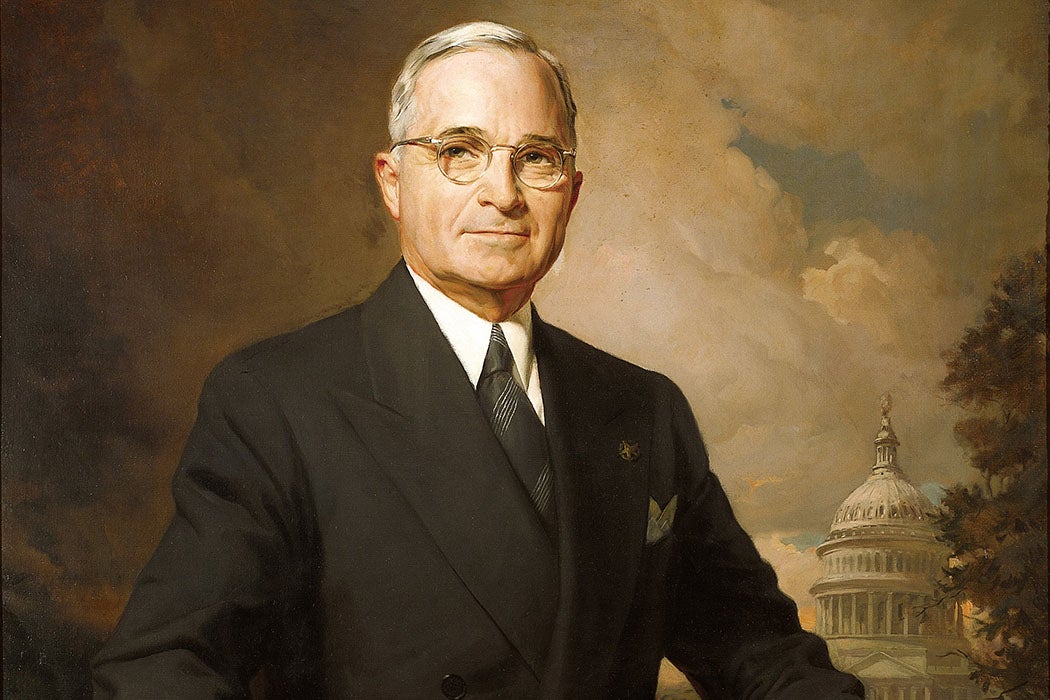Harry S. Truman, the man from Independence, Missouri, was born on May 8th, 1884. Initially viewed by his critics as a parochial, lackluster Midwestern politician, Truman emerged as a president who oversaw grand historic events: the end of World War II; the atomic bombings of Japan; the domestic legacy of the Fair Deal; the racial integration of the U.S. military; Cold War containment; a war in Korea from which emerged an economically successful and stable South Korea.
And yet, when Truman started out as vice president, the position was a devalued, powerless one. The fact that vice president is now a significant role is, ironically, thanks to Truman being closed out of the inner workings of Roosevelt’s fourth and final term, only to ascend to the presidency with little prior knowledge.
Looking at his run as vice president, one wouldn’t think Truman could be considered an influential vice president. He served in that post for only eighty-two days until ascending to the presidency upon the death of Franklin D. Roosevelt on April 12th, 1945.
According to political scientist Marie D. Natoli, the Missouri politician was part of a long American political tradition that devalued the vice presidency. Another vice president who served under Roosevelt, John Nance Garner, allegedly described the role as “not worth a pitcher of warm spit.”
When Truman was selected as Roosevelt’s running mate in 1944, there was little public concern about the president’s health. But in fact Roosevelt was on a steep decline. Despite his failing health, Roosevelt never informed his vice president on crucial matters. Truman met with Roosevelt a total of eight times between when he was selected as a running mate and when he himself became president. When he succeeded Roosevelt, Truman was uninformed about the existence of the atomic weapons’ program. He had been shut out of crucial discussions among Winston Churchill, Joseph Stalin, and Roosevelt over the shaping of the postwar era. While Truman was about to become the most powerful man in the world, he was remarkably uninformed about his new responsibilities.
By keeping Truman out of the loop, notes Natoli, Roosevelt “had done his vice president and the nation a great disservice.”
So Truman, who had no vice president until getting elected on his own in 1948, made sure that a similar situation would not occur again. He increased the influence of the vice president, making the vice president a member of the National Security Council, a participant in Cabinet meetings and, most importantly, as a recipient of regular security briefings.
Weekly Newsletter
According to political science scholars George C. Edwards III and Lawrence R. Jacobs, the modern vice presidency has little relation to the powerless position in the past.
Richard Nixon, as Dwight Eisenhower’s vice president, played a prominent role on the global Cold War stage. Washington veteran Walter Mondale became a top advisor to President Jimmy Carter, who before becoming president lacked federal government experience. George H. W. Bush emerged from the vice presidency as the heir to President Ronald Reagan. Dick Cheney, George W. Bush’s vice president, was criticized for being overly powerful on foreign policy and anti-terrorism issues. Joe Biden played an influential role in the Obama Administration, and is seen by some as a potential presidential contender in 2020.
Natoli writes, “The man of Independence must be credited with beginning the growth of the institution designed to provide the assured continuity of a stable political system.”







